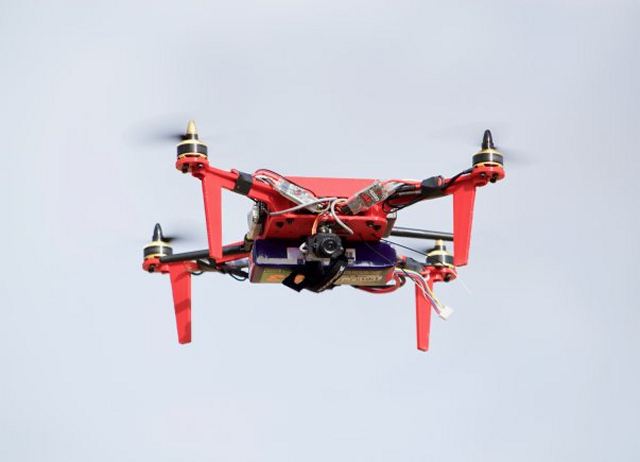Engineers from the U.S. Army Research Laboratory flight test 3D printed drone called ODSUAS 10601176
|
|
|||
|
Military Defense Industry Technology - 3D printed drone
|
|||
|
|
|||
| Engineers from the U.S. Army Research Laboratory flight test 3D printed drone called ODSUAS | |||
|
In December 2016, engineers from the U.S. Army Research Laboratory flight tested 3D printed unmanned aircraft created with a new on-demand system. The demonstration, which was part of the Army Expeditionary Warrior Experiments, or AEWE, at Fort Benning, Georgia, showcased new technology designed to provide Soldiers in the field with rapid unmanned aerial vehicle support.
|
|||
|
|
|||
 The 3-D printed On-Demand Small Unmanned Aircraft System, or ODSUAS, flies at speeds of up to 55 (88 km/h) miles per hour. Although the lightweight shell and propeller arms are printed using additive manufacturing, the motors and propellers will be assembled using off-the-shelf equipment. (Photo Credit: Angie DePuydt) The 3-D printed On-Demand Small Unmanned Aircraft System, or ODSUAS, flies at speeds of up to 55 (88 km/h) miles per hour. Although the lightweight shell and propeller arms are printed using additive manufacturing, the motors and propellers will be assembled using off-the-shelf equipment. (Photo Credit: Angie DePuydt) |
|||
|
|
|||
|
"We've created a process for converting Soldier mission needs into a 3-D printed on-demand small unmanned aircraft system, or ODSUAS, as we've been calling it," explained Eric Spero, team leader and project manager. The system allows Soldiers requiring unmanned aerial vehicle support to input their requirements into mission planning software and then receive a 3-D-printed aerial vehicle within 24 hours. "We thought they're not going to think that's fast enough," Spero added. "[but] the timeline … fits right in line with the way they plan and execute their missions." The engineers said they felt the combination of 3-D printing and unmanned aerial vehicles made for a natural technology solution. "Everybody knows all the great things that can be done with 3-D printers," said John Gerdes, an engineer on the project. "So we figured let's assemble these two new technologies and provide a solution to Soldiers that need something right now." In the days leading up to the demonstration, the team spent many hours flight testing and verifying the designs to ensure everything would work the way they expected. "It was good that we didn't have any mistakes on game day," observed fellow engineer Nathan Beals. "The day before we did some test flights and worked out some kinks. I think we had the quad up to 55 miles per hour." Based on the feedback engineers received from Army leaders, Spero said, his team plans to work on improving noise reduction, standoff distance, and agility, as well as increasing the 3-D-printed drone's payload capacity. |
|||


























